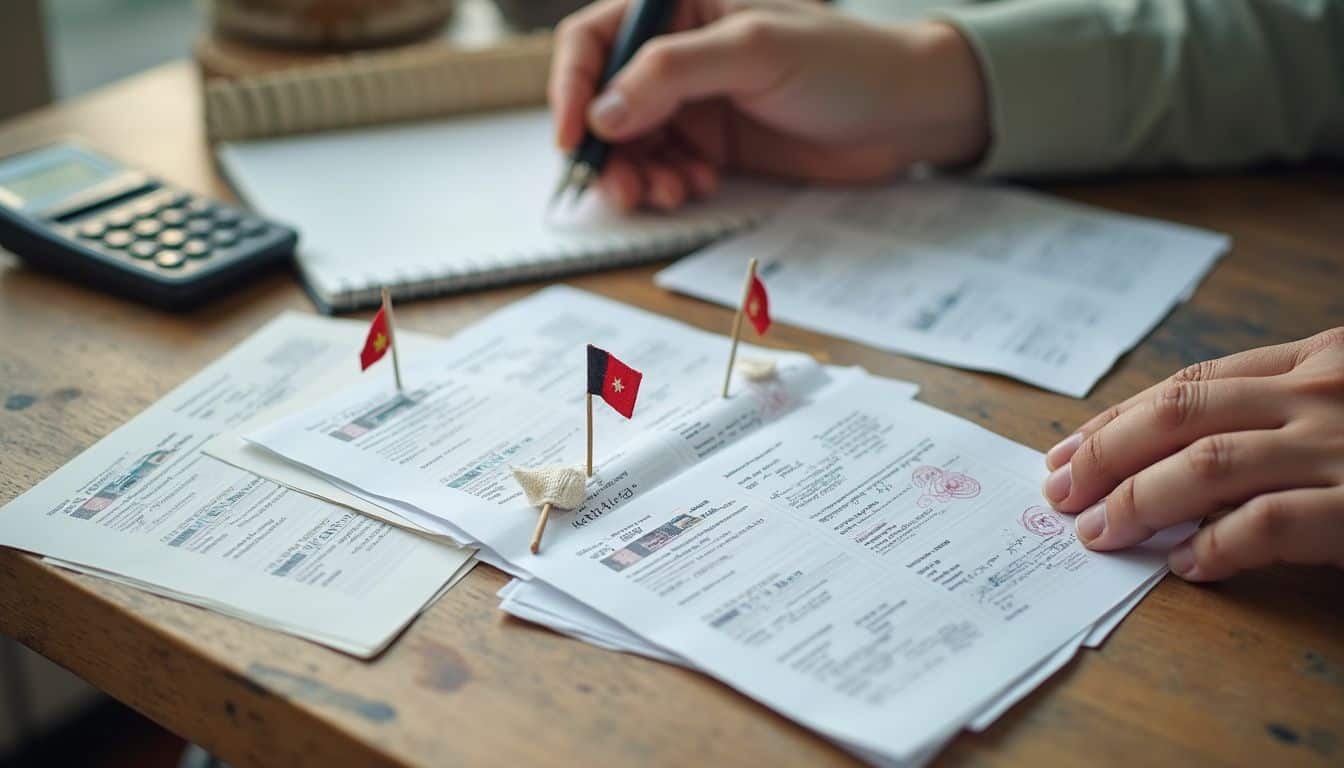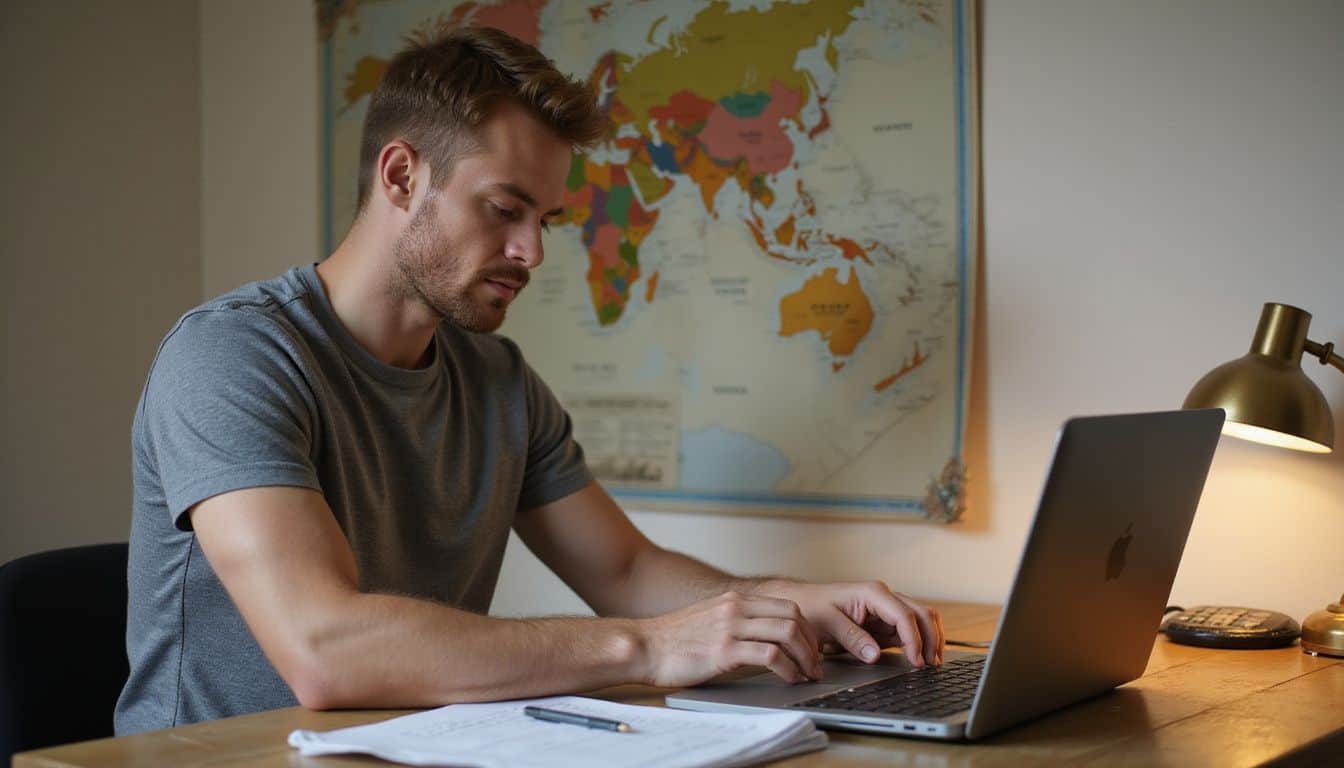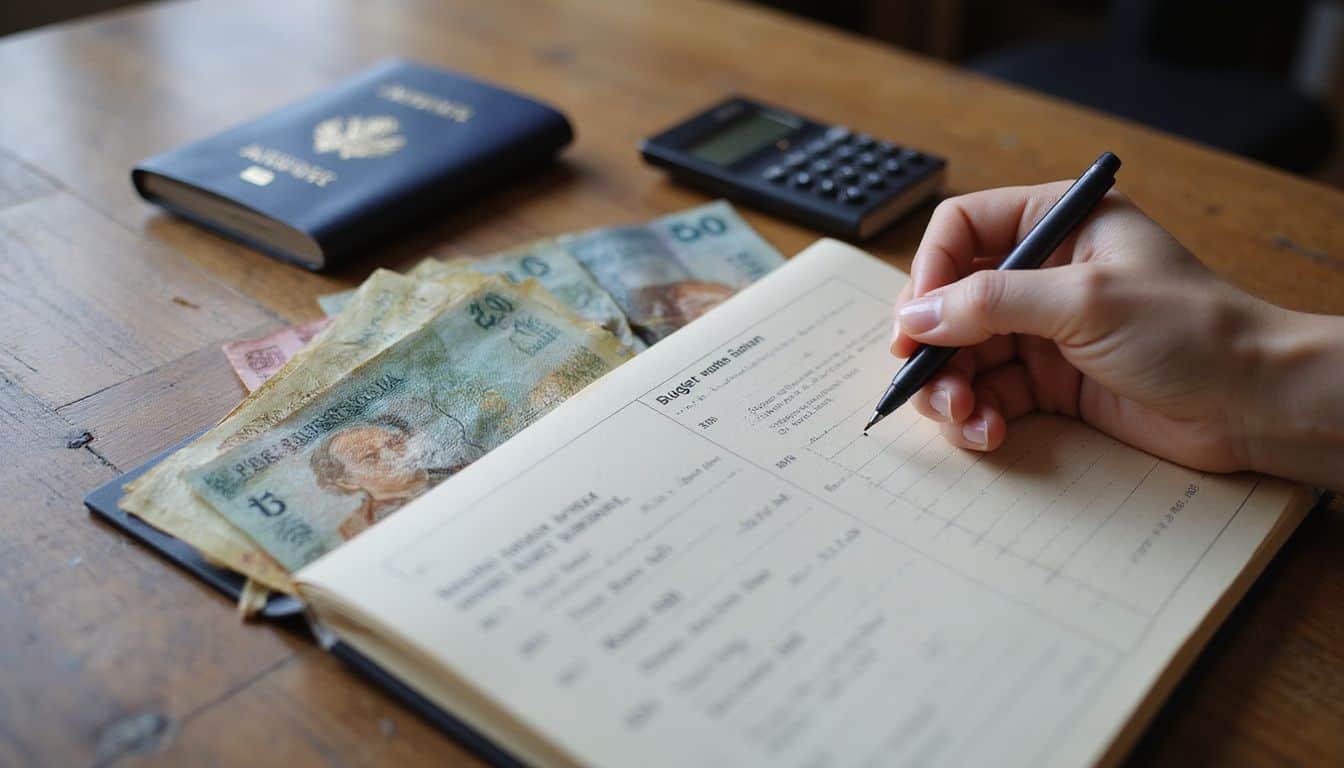Moving to Australia can feel overwhelming when you don’t know where to start. Australia consistently ranks high in quality of life assessments, with excellent employment opportunities and strong community ties.
This guide breaks down how to move to Australia into seven clear steps, covering everything from visa requirements to finding the perfect city for your new life. Your Australian adventure starts here.
Key Takeaways
Australia’s skilled migration requires minimum 65 points, with successful applicants typically scoring 85-90 points based on age, education, and English proficiency.
Single women need approximately AUD $1,105 monthly for basic living expenses, plus AUD $15,000 in savings before moving to Australia.
Major cities like Sydney and Melbourne offer the best job markets but have higher living costs than smaller cities.
Student visas allow 40 hours work per fortnight and can lead to permanent residency through post-study work opportunities.
Partner and family visas provide direct pathways to permanent residency but require extensive relationship documentation and lengthy processing times.
Table of Contents
What is your main reason for moving to Australia?

Your main reason for moving to Australia shapes your entire visa application process and determines which path you’ll take. Skilled work opportunities attract many women who want to build careers in Australia’s growing job market, especially in STEM fields where demand stays high.
Family sponsorship offers another popular route, particularly for women joining partners or relatives already living in mainland Australia. Some women choose student visas to pursue education while building connections for future permanent residency.
Each reason requires different preparation and documentation. Career-focused moves need job contracts or skills assessments, while family-based applications require relationship evidence or sponsorship documents.
Partner Visa Australia applications, for example, demand proof of genuine relationships and shared commitments.
Understanding your primary motivation helps you focus your energy on the right visa type and saves time during the application process. Financial planning also varies based on your reason, as work visas might provide immediate income while student visas require upfront education costs and living expenses.
Understand Visa Requirements

Getting the right visa is your first major step to becoming an Australian permanent resident. Australia offers several visa paths, and each one has different rules, costs, and processing times that you need to understand before you apply.
What are skilled migration visas and who qualifies?

Skilled migration visas target individuals with in-demand skills who want to work in Australia. These visas fall under the General Skilled Migration program, which includes the Skilled Independent Visa (subclass 189) and Skilled Nominated Visa (subclass 190).
You need at least 65 points to qualify, based on your age, education, English skills, and work experience. The points-based immigration system evaluates candidates fairly across all backgrounds.
I learned that having a master’s degree in science, technology, engineering, or mathematics gave me extra points, but I still needed to prove my English proficiency through TOEFL iBT scores.
To start the process, you submit an Expression of Interest through SkillSelect. Some visa types require state or territory nominations, which can add complexity to your application.
The process takes anywhere from 3 to 37 months, so patience becomes essential. You must show financial readiness by covering visa fees and proving you have enough Australian dollars for initial living expenses.
Many applicants find migration agents helpful during this lengthy process, especially for understanding specific requirements and documentation needs.
How can employer-sponsored visas help me move?

Employer-sponsored visas offer a direct path to Australia if you have a job offer from an Australian company. These visas allow you to live and work in Australia with your family, making relocation much easier than other visa types.
Your potential employer must prove they cannot find suitable Australian workers for the role, which means the Australian Labour Ministry reviews all job contracts before approval. This process protects both you and local employees by ensuring fair hiring practices.
Companies sponsor foreign workers because they need specific skills that are hard to find locally. The application requires supporting documents and strict adherence to requirements, but your employer typically helps with much of the paperwork.
Most employer-sponsored visas can lead to permanent residency, giving you long-term security in Australia. You’ll need a confirmed job offer before applying, so start your job search early and focus on industries with high demand for skilled workers.
What are the options for student visas in Australia?

Australia offers the Student Visa (subclass 500) as the primary option for international students. This visa allows you to study full-time at approved educational institutions across the country.
You can work up to 40 hours per fortnight during your studies, which helps cover living expenses. During semester breaks, you can work unlimited hours to earn extra income.
Getting this visa requires several steps. You must provide proof of enrollment at an Australian school, college, or university. Financial resources need to be sufficient to cover tuition and living costs.
Health and character requirements must be met before approval. English language proficiency tests like IELTS or TOEFL are required. Students must obtain Overseas Student Health Cover (OSHC) for health insurance during their stay.
After graduation, you can apply for a post-study work visa to gain Australian work experience. This pathway often leads to permanent residency opportunities, making it easier to move to Australia long-term.
How do family and partner visas work?

Family and partner visas create a pathway for people to join their loved ones who are already australian citizens or permanent residents. These visas cover spouses, children, parents, and other eligible family members who want to build their lives in Australia.
The Partner Visa (subclass 820/801) stands out as one of the most common options, allowing married couples and de facto partners to reunite. Child Visa (subclass 101) helps parents bring their dependent children to Australia.
Each application requires solid proof of your relationship, including marriage certificates, birth certificates, or evidence of your genuine partnership.
Family is not an important thing, it’s everything. – Michael J. Fox
The application process demands patience, as processing times stretch from several months to over a year depending on your specific situation. You’ll need to pass health checks and provide police clearance certificates to meet character requirements.
These family visas offer a direct route to permanent residency, which can later lead to australian citizenship. The government carefully reviews each case to ensure relationships are genuine and meet all legal standards.
Success with family visas opens doors to Medicare benefits, work rights, and the chance to sponsor other family members later. Understanding visa requirements becomes your next crucial step in the immigration process.
Learn About the Australian Points-Based System

Australia uses a points-based system to select skilled migrants, and your score determines if you qualify for permanent residence. Your age, education level, English skills, and work experience all affect your final points total… so understanding this system becomes crucial for planning your move successfully.
How does the Australian points system work?

Australia’s points system ranks skilled migration applicants based on specific criteria. The system awards points for age, education, English language skills, and work experience in skilled jobs.
You need a minimum of 65 points under the General Skilled Migration Program to qualify. Most successful applicants score between 85 and 90 points, making the process highly competitive.
The system favors younger applicants, giving maximum points to those aged 25-32 years. A master’s degree or doctorate earns you more points than a bachelor’s degree, with doctorates receiving 20 points.
Your skilled work experience counts too, earning points based on how long you’ve worked and where. Partner qualifications can boost your score, and state nominations add extra points to improve your chances.
You must submit an Expression of Interest through SkillSelect to start the process.
What factors affect my points score?

Several key factors directly impact your points score in Australia’s skilled migration system.
| Factor | Points Available | Details |
|---|---|---|
| Age | Up to 30 points | Ages 25-32 score highest points. Points decrease as you get older or younger than this range. |
| Educational Qualifications | Up to 20 points | Higher degrees earn more points. Doctorate degrees score maximum points, while diplomas score fewer. |
| English Language Proficiency | Up to 20 points | Competent English earns basic points. Proficient level scores more, while Superior English earns maximum points. |
| Employment Experience | Up to 20 points | Skilled occupation experience enhances points. Experience in Australia counts for extra points compared to overseas work. |
| Community Language Skills | 5 points | NAATI accredited language skills can add bonus points to your total score. |
| Partner’s Qualifications | Up to 10 points | Your partner’s qualifications and English proficiency contribute extra points to your application. |
| State/Territory Nominations | Up to 15 points | State or territory nominations provide additional points for visa applications in specific regions. |
| Professional Year | 5 points | Completing a professional year in certain fields in Australia can increase your points total. |
Age plays a crucial role in your points calculation. Women aged 25-32 receive the highest points allocation. Your score drops significantly once you pass 32 years old.
Education credentials make a big difference too. Masters degrees score higher than bachelor’s degrees. Doctorate qualifications earn you the maximum education points possible.
English test results fall into three categories. Competent English gives you basic points. Proficient scores boost your total considerably. Superior English proficiency maximizes your language points.
Work experience in skilled occupations adds valuable points. Experience gained in Australia counts more than overseas employment. Years of relevant work history directly translate to higher scores.
Community language abilities offer bonus points. NAATI accreditation for languages other than English can boost your application. This extra five points might make the difference between success and rejection.
Partner contributions shouldn’t be overlooked. Their English skills and qualifications can add up to 10 points. Single applicants miss out on these partner bonus points entirely.
State nominations provide substantial point increases. Different states offer varying nomination opportunities. Regional areas often have more generous nomination programs than major cities.
Professional year programs offer another path to extra points. Accounting, engineering, and IT fields commonly offer these programs. Completing one year in an approved program adds five points to your total.
How do I plan my finances for moving to Australia?

Moving to Australia requires careful money planning, especially with the current exchange rate between the pound and australian currency. You’ll need to budget for visa fees, living costs, and currency exchange charges while understanding how salaries compare to your home country’s income levels.
What is the cost of living in Australia?

Living in Australia costs more than many people expect. A family of four needs about AUD $3,914 each month to cover basic expenses. Single women should budget around AUD $1,105 monthly, not including rent.
Major cities like Sydney and Melbourne have the highest costs, especially for housing. Most financial experts suggest saving at least AUD $15,000 before you move, and this doesn’t include visa fees.
Comfortable annual living requires about AUD $20,000 for individuals and AUD $50,000 for families.
Housing takes up the biggest chunk of your budget, particularly in urban areas where jobs are plentiful. Rent prices vary dramatically between cities, with Sydney commanding premium rates.
Food, transport, and utilities add up quickly too. Australian currency fluctuates against the pound, so exchange rates affect your purchasing power. Many women find that salaries in Australia often balance out the higher costs, especially in skilled professions.
Public healthcare helps reduce medical expenses significantly. Victorian cities like Melbourne offer slightly lower costs than Sydney while maintaining excellent job markets and cultural opportunities.
I was shocked by grocery prices in my first month, but my salary increase more than made up for it after I found steady work.
How do I handle currency exchange and transfer money?

Managing your money transfer from the UK to Australia requires smart planning and the right tools. Currency exchange rates can make or break your moving budget, so you need to stay informed about the best options available.
- Monitor the GBP to AUD exchange rate daily and set up rate alerts through financial apps or online platforms to catch favorable conditions for your transfers.
- Avoid high-street banks for international transfers since they charge substantial fees that can cost you hundreds of pounds on large transactions.
- Choose online money transfer services like Moneycorp or similar providers that offer better rates and lower fees than traditional banking institutions.
- Set up regular money transfers between your UK and Australian accounts, especially if you’re planning property purchases or need to manage pension payments.
- Open a local bank account in Australia immediately upon arrival to make currency management easier and reduce ongoing transfer costs.
- Plan multiple smaller transfers instead of one large sum to spread your exchange rate risk and potentially capture better rates over time.
- Keep detailed records of all international transfers for tax purposes and to track your spending during the australian immigration process.
- Consider timing your transfers around major economic announcements or market events that typically affect currency fluctuations between pounds and Australian dollars.
Where should I live in Australia?

Choosing where to live in Australia can make or break your entire experience as an expat. Major cities like Sydney, Melbourne, and Brisbane offer different lifestyles, job markets, and costs of living that will shape your daily life.
What are the best cities for expats?

Australia offers several excellent cities that welcome expats warmly. Each major city provides unique advantages for women starting anew in this beautiful country.
- Sydney appeals to young adults and singles with its strong job market and lively nightlife, making it ideal for career-focused women eager to experience Australian culture.
- Melbourne distinguishes itself as culturally diverse and generally more affordable than Sydney, attracting many expats who enjoy its coffee culture, arts scene, and varied neighborhoods.
- Brisbane offers a relaxed lifestyle with cost-effective options and a growing arts scene, suitable for women seeking work-life balance on a budget.
- Adelaide is family-friendly with lower living costs and good job prospects in the food and wine sector, ideal for women planning to settle long-term.
- Perth provides mining industry opportunities and beautiful beaches, though it’s more distant from other major cities, making it suitable for women in specialized fields.
- Canberra offers stable government positions and excellent universities, appealing to women with master’s degree qualifications interested in public sector careers.
- Gold Coast combines coastal living with tourism jobs, creating opportunities for women interested in hospitality and service industries.
- Darwin presents unique Northern Territory experiences with lower unemployment rates in specific sectors, though adapting to the tropical climate may be necessary.
Should I rent or buy property in Australia?

Renting offers flexibility for newcomers deciding on the best area to live in Australia. Major cities have high living costs, making rental properties a common choice for expatriates.
You can explore different neighborhoods without the commitment of purchasing. Rental agreements give you freedom to move if you find a better location or job opportunity. The Australian property market varies by region, affecting rental and purchase prices significantly.
Lower maintenance responsibilities come with renting compared to owning a home.
Buying property requires significant upfront costs, which may not be feasible for everyone starting fresh. Down payments, legal fees, and inspection costs add up quickly. Understanding local regulations and market conditions is essential for informed decisions about renting or buying property.
Your master’s degree might help you secure better employment, improving your ability to qualify for a mortgage later. Start with renting to get familiar with different areas, then consider purchasing once you’ve established yourself professionally and financially.
How do I prepare for employment in Australia?

Finding work in Australia requires smart planning and the right approach. You’ll need to understand local job markets, polish your resume to Australian standards, and learn which industries actively hire international workers with your skills.
What are effective job search strategies?

Finding work in Australia requires smart planning and the right approach. Your success depends on using proven strategies that connect you with employers who need your skills.
- Use major job search websites like Careerone, Adzuna, and Jobactive to find opportunities. These platforms list thousands of positions across different industries and skill levels.
- Research salary expectations in your industry and location before applying. This knowledge helps you negotiate better offers and avoid undervaluing your worth.
- Build a professional network in Australia through LinkedIn and industry events. Connections often lead to job opportunities that never get advertised publicly.
- Stay informed on job market trends and in-demand professions. This information guides your career decisions and helps you target growing sectors.
- Understand visa requirements and pathways that match your qualifications. Some positions require specific work permits or an electronic travel authority for entry.
- Consider hiring migration agents for visa assistance if the process seems complex. Professional help can save time and prevent costly mistakes in your application.
- Align your skills with Australia’s labor market needs through workforce planning. Focus on industries that actively seek workers with your background.
- Highlight your master’s degree and relevant qualifications in applications. Australian employers value higher education and specialized training.
- Apply directly to companies in your field, even if they haven’t posted openings. Many businesses hire through direct applications rather than job boards.
Which industries have the highest demand?

After planning your job search strategy, you’ll want to concentrate on areas with the strongest hiring activity. Australia’s economy creates opportunities across multiple fields, with unemployment at just 4% as of 2024.
| Industry Sector | Key Roles | Why It’s Hot |
|---|---|---|
| Construction & Engineering | Civil engineers, construction managers | Major infrastructure projects and housing boom drive demand |
| Healthcare | Registered nurses (RNs), specialists | Aging population creates nursing shortages nationwide |
| Technology | Software programmers, developers | Digital transformation across all business sectors |
| Hospitality | Chefs, restaurant managers | Tourism recovery and dining culture expansion |
| Education & Care | Childcare workers, teachers | Growing families need quality childcare services |
| Mining & Resources | Engineers, technicians | Export demand for minerals and energy resources |
| Agriculture | Farm managers, agricultural scientists | Food security and sustainable farming initiatives |
These careers align with Australia’s Priority Migration Skilled Occupation List, giving you better visa prospects. Tech roles offer remote work flexibility, ideal for work-life balance. Healthcare positions provide job security and competitive salaries. Construction jobs are plentiful in major cities like Sydney and Melbourne. Hospitality work allows you to connect with Australia’s social culture. Childcare roles offer stable employment with government support. Mining pays well but often requires regional relocation.
How Will Moving to Australia Change in 2025?

Australia’s immigration system will undergo significant changes in 2025, particularly for women with master’s degrees seeking new opportunities. The Skilled Work Regional Visa (subclass 491) will emphasize regional nomination or family sponsorship, making it easier for qualified professionals to settle in smaller cities.
Visa application costs may change, affecting pricing structures for immigrants planning to relocate. General immigration requirements will still include a skills assessment and at least five years of relevant work experience, but the process may become more efficient for certain occupations.
The Points Test will remain essential in skilled migration management, with immigration candidates needing skills in occupations listed on Australia’s skilled occupation list. Nominations for visas can be made by a State/Territory or by Australian permanent resident family members, providing applicants multiple pathways to qualify.
Employer-sponsored visas will continue to be available and may adapt to labor market demands, especially in healthcare, technology, and education sectors where women with advanced degrees often excel.
People Also Ask
What education requirements do I need to move to Australia?
A master’s degree can significantly boost your chances of getting approved for Australian immigration. Higher education qualifications earn you more points in the skilled migration system, making your application more competitive.
How important is having a job offer before moving to Australia?
While a job offer isn’t always required, it can fast-track your visa process and provide security once you arrive. Many skilled worker visas allow you to apply without a job lined up first.
What are the main steps to successfully relocate to Australia?
The process involves checking your eligibility, getting your skills assessed, taking English tests, and submitting your visa application. You’ll also need to gather documents, undergo health checks, and plan your move carefully.
How long does the entire immigration process typically take?
Processing times vary widely depending on your visa type and circumstances. Some applications take several months, while others can extend beyond a year, so starting early is crucial for success.
